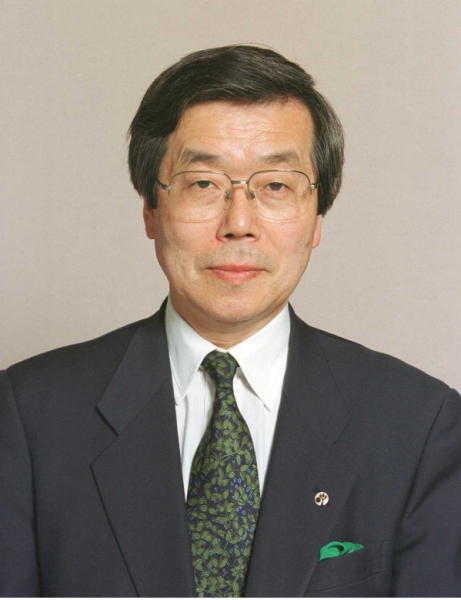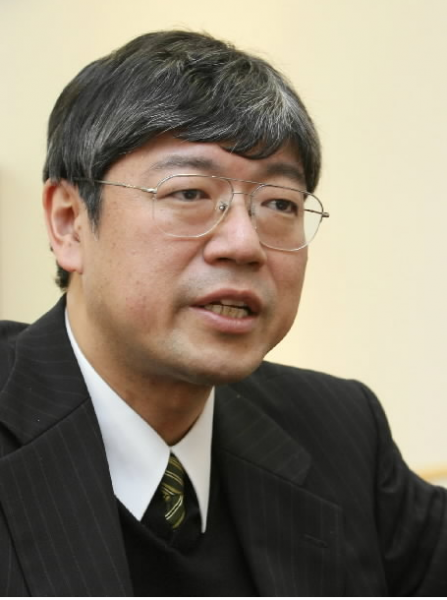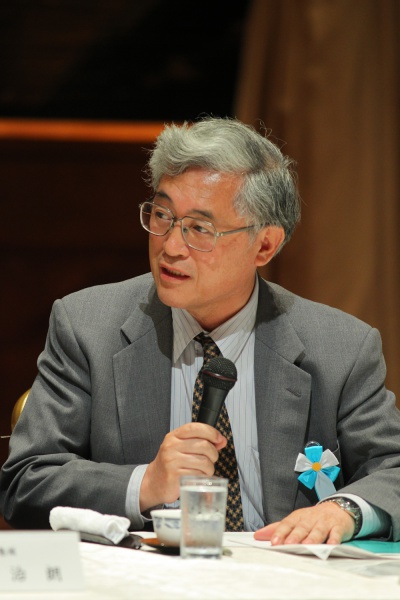A former admiral who struggled in logistics support in the Afghan Wars speaks out. Right of Collective Self-defense — Politicians don’t understand the real war.
Attacks on U.S. ships, missiles launched by North Korea… In real wars, what happens all the time is the unexpected. Can we be bound by an armchair theory?
The Cabinet of the Japanese government is expected to resolve changes to the nation’s constitutional interpretation in order to permit the exercise of the right of collective self-defense.
The issue of the right of collective self-defense is complex, however, and the media coverage of the matter is often unrealistic due to an overemphasis on its legal aspects. I assume that this makes it difficult for the general public to understand the pros and cons of exercising this right.
Until I retired from the Japan Maritime Self-Defense Force (JMSDF) in 2008 as a commander of a Self-Defense Force fleet, I spent many years carrying out actual missions. I would like to express my opinions on this issue based on this experience. First, as an assumption, I believe that the exercise of the right of collective self-defense should be permitted as long as we have the U.S.-Japan alliance as the basis of Japan’s national strategy.

Koda Yoji
Former Commander in Chief, Self-Defense Fleet (Vice Admiral) of the Japan Maritime Self-Defense Force
The situation of Japan, which must obey the provisions of Article 9 of the Constitution of Japan, is complex. I agree that the conventional and current interpretation of Article 9, whereby exercising the right of collective self-defense exceeds the limit of the right of self-defense accepted by the Constitution even if the right of individual self-defense can be exercised, is correct under these circumstances. Both the organizational size and security environment, however, have changed significantly since the National Police Reserve, the predecessor of the Self-Defense Forces, was established.
The preamble of the Constitution of Japan states, “We desire to occupy an honored place in an international society striving for the preservation of peace, and the banishment of tyranny and slavery, oppression and intolerance for all time from the earth.” To achieve this goal, we must naturally fulfill our responsibilities associated with the achievement. To this end, we must accept the exercise of the right of collective self-defense to resolve international security issues that concern Japan today, when its national strength has grown and the Self-Defense Forces are more powerful.
Rapidly changing situation in Asia
The question, then, is “Why now?” I consider that there are two changes that are the reason for the timing.
One is a change in the power balance between the Self-Defense Forces and the U.S. military as allies.
During the era of the U.S. occupation of Japan, the U.S. military obviously had overwhelming strength. Japan’s Self-Defense Forces, on the other hand, were very new organizations that had only been established after World War II. If they were people, the Self-Defense Forces from their establishment until the late 1960s would have been infants who had just started potty training, as opposed to the U.S. military, which was already fully grown. It was unthinkable that the Self-Defense Forces would become capable of assisting the U.S. military. In other words, it was not necessary to even consider using the right of collective self-defense.
The situation changed during the 1970s and 1980s, however. The Self-Defense Forces gradually improved their abilities through the high economic growth period of Japan. The Forces, to use the earlier analogy again, had grown into their youth by then.
This was the time when the United States committed itself to the Vietnam War in the early 1970s, but essentially lost it with the Fall of Saigon in 1975. Subsequently, the Far Eastern Army of the Soviet Union substantially increased its military power during the period of the rapidly developing Cold War after the end of the détente (easing of tension) at the end of the 1970s. Only around this time could the U.S.-Japan collaboration for resolving military issues become more realistic.
The government at the time, however, could not politically address the question of what to do with the right of collective self-defense in Japan’s joint activities with the U.S. military due to the predicted strong resistance of opposition parties, even if the government felt the need to do so. The current constitutional interpretation of exercising the right of collective self-defense was established by the then Tanaka Kakuei administration in this political environment.
Accordingly, what is the current situation when the pros and cons of exercising the right of collective self-defense are debated even at the civilian level?
While the relative strength of the Self-Defense Forces may not be clear to much of the Japanese population, it has grown to be truly reliable for the United States.
A comparison of naval strength between different nations, for example, apparently shows the prominent power of the U.S. Navy. It is followed by the JMSDF competing for the top position in the “secondary group” after the U.S. Navy, although various methods of comparison are available. I believe that the JMSDF ranks second in the world in terms of capacity for naval operations.
The British Royal Navy is seemingly the second most powerful naval force, but its actual scale is only about half that of the JMSDF in terms of the number of destroyers and larger combatant ships owned. The number of such combatant ships owned by the French Navy is around 60% of that of Japan.
The Royal Navy owns strategic nuclear submarines (ballistic missile nuclear-powered submarines) and is planning to add two new aircraft carriers. France also has one aircraft carrier. It may be seen as having a large naval force because of this, but with regard to the deployment cycle of aircraft carriers, about a half to two thirds of the time is spent on training and maintenance, during which they cannot be used for actual operations. The JMSDF, on the other hand, does not have any aircraft carriers, but has four homogeneous world-class escort fleets, which comprise one helicopter carrier, two Aegis destroyers and five multi-purpose destroyers, ready for action at all times.
The Air Self-Defense Force is not an organization with striking power, but it has 350 fighter planes and an air defense network of the highest level in the world solely for the aerial protection of the country, which is unheard of in any other country. Like the Maritime Self-Defense Force, it should be acknowledged as having a world-class standard.
The Self-Defense Forces, in other words, have now fully grown into an adult in the global sense. In the global situation of continuous disputes and tensions such as the South and East China Seas that are associated with Ukraine, Syria, and China, it is understandable that the assistance of the Self-Defense Forces is sought, even a little, by the United States, which is the only nation capable of being involved in these conflicts, yet whose relative military power has been declining, as President Obama has stated that his country is no longer the police force of the world.
The other change is the considerable transformation of Japan’s external environment.
The era of the Tanaka administration in 1972, during which today’s constitutional interpretation was established, was the time of easing the East-West tension to seek the end of the Vietnam War. In the East-West Cold War that returned to winter following the subsequent Soviet invasion of Afghanistan, a rapid increase in the power of the Soviet Far Eastern air and naval forces resulted in repeated incidents that increased the tension, although a major military clash was avoided.
While in the Western Bloc, the members of the North Atlantic Treaty Organization (NATO) such as the United Kingdom and Germany increased their mutual support for the United States, Japan maintained its alliance with the United States by making careful efforts while strictly complying with its own restrictions.
Yet at the time, the nuclear deterrence between the two superpowers was definitely effective. Even if a volatile situation broke out, an accurate understanding of each other’s nuclear and other capabilities prevented the worsening of the situation before a clash resulted. This was the time when, in Asia, Henry Kissinger, Assistant to the then U.S. President, made a surprise visit to Beijing and helped reduce the distance between the United States and China to seek a dignified end to the Vietnam War and rebuild the Cold War regime against the Soviet Union.
After the dissolution of the Soviet Union in around 1990, China began increasing its military spending alongside its economic growth, and grew into a military big power and now about to be a superpower.
Particularly since the beginning of this year, China under the Xi Jinping administration has been undertaking more active and coercive military operations.
Recently, Chinese Su-27 fighter planes dangerously approached the OP-3C and YS-11EB aircraft of the Self-Defense Forces in the skies over the East China Sea in multiple incidents. China also forced its naval expansion into the South China Sea, as described below in more detail, and the tension caused by the conflicts of dominion over the islands and coral reefs with Vietnam and the Philippines continues today.
While both the United States and China are nuclear powers, China’s strategic nuclear weapons are still considerably weaker than those of the United States, and the strategic nuclear capabilities of the two are not balanced. In such a case, strong nuclear deterrence such as existed during the Cold War era no longer functions properly, which also weakens deterrence against normal military power.
As suggested by China’s past military operations in the South China Sea, the country is seeking to swiftly intrude when there is an opportunity, secure a base, and increase its influence in the region.
This is China’s adventurism. This threat is always present in the area from the Senkaku Islands to the Southwest Islands of Japan too. The threat to the neighboring countries comes not only from China. Predicted problems when intercepting North Korean missiles are discussed every time the exercise of the right of collective self-defense is considered.
The international environment has therefore changed completely since the early 1970s, when the first constitutional interpretation was established. The responses to these changes are another reason why the right of collective self-defense is now being discussed.
Are we not tied to “scenarios”?
As noted earlier, in Japan, which has experienced losing a war that completely destroyed the nation and thus obeys Article 9 of its Constitution, even discussing the pros and cons of the use of the right of collective self-defense has long been considered a taboo.
Given this postwar trend, the step taken by the Abe Shinzo administration on this occasion has significant meaning. I have high regard for the decision made by the Prime Minister.
However, I often have questions when listening to the arguments in the Diet and ruling party consultations of the Liberal Democratic Party (LDP) and Komeito.
First, I was not at all satisfied with the fact that the discussions were based on a priori assumptions in the “scenarios” of conditions that would permit the use of the right of collective self-defense.
The Diet, for example, has been discussing several cases that would permit the exercise of the right of collective self-defense, including the protection of a U.S. ship that has been attacked in international waters, the response to an illegal act committed on a remote island, the interception of a ballistic missile that attacks the United States, and the removal of mines in a sea lane in combat. The government also presented, in ruling party consultations, fifteen cases that would make responses difficult under the current constitutional interpretation and laws.
In reality, however, politicians must expect that conditions that do not correspond to any of the presumed scenarios and that require extremely difficult decision-making could arise in the actual battlefields when the United States and Japan jointly engage in defense operations. In other words, they are missing the argument of what to do when an unexpected situation arises.
To add a little more explanation, there are countless combat patterns in military operations. In fact, it is more common in military action that the enemy attempts to foil your plan.
If we follow Pattern A, the enemy follows Pattern B to outwit us. We then follow Pattern C in response. This is repeated many times, and the one who has run out of tactics loses the battle in the end.
The current arguments only follow, more specifically speaking, Pattern A, which relates to what to do when a U.S. ship is attacked in international waters. Allowing the use of the right of collective self-defense only in that situation would hinder the actual practical actions. Although politicians simply say “if a U.S. ship is attacked,” when, for example, a missile is launched, we may not immediately know whether the target is a U.S. ship or a nearby Japanese defense ship that is operating in nearby waters of the U.S. ship. Cases like this are actually more common than not.
Focusing too much on individual cases and making political discussions too detailed may reduce the options available in the actual combats. The worst result of the current argument on the right of collective self-defense is the decision not to permit any conditions other than the scenarios presented in political discussions. Politicians should discuss the pros and cons of accepting the exercise of the right of collective self-defense from a broad perspective and, after approval, focus on the actual combat undertaken by the Self-Defense Forces.
In the world of national defense, “beyond expectations” would not be tolerated even for an incident that happens once in a million cases. Any case like the Fukushima nuclear power plant accident must be prevented. To this end, discussions in the political arena must be carried out without too much focus on the details of individual cases.
Reduce the requirements for defense mobilization
The second point is that discussions on relaxing the conditions and requirements for exercising the right of individual self-defense and for defense mobilization should be further developed, along with the discussions on the right of collective self-defense.
Two factors can be thought of as the conditions in which to exercise the right of self-defense. One is whether the right of self-defense is collective or individual, and the other is whether it is exercised before or after issuing defense mobilization.
Defense mobilization is a mobilization order issued by the Prime Minister in response to an armed attack by external troops. It is issued when Japan is under an armed attack by external troops or a clear threat of such an attack is imminent.
If the right of collective self-defense is exercised after defense mobilization, Japan could, without hesitation, respond to the invaders in U.S.-Japan combined operations. This is a typical case of exercising the right of collective self-defense. The right of individual self-defense after defense mobilization is also a clear situation in which the troops of the Self-Defense Forces and the invading force confront each other.
If it were before defense mobilization, however, the situation would be difficult. For example, let us assume that U.S. ships are stationed in the Sea of Japan. At this time, a North Korean submarine, which is detected only by the Self-Defense Forces due to the locations of the ships, launches a torpedo targeting a U.S. ship. The Self-Defense Forces detect the acoustic signal of the torpedo, but the U.S. ship doesn’t. Even if the exercise of the right of collective self-defense were permitted, if defense mobilization has not been issued, the Self-Defense Forces may not be allowed to attack the North Korean submarine, but may have to overlook the situation.
This is not realistic at all, but permitting the use of the right of collective self-defense without defense mobilization based on the right of individual self-defense may cause a contradictory situation in which the U.S. military could be protected while the Japanese people and land could not. Theoretically, such conditions are conceivable.
In the ruling party consultation, the requirement for use of force which is a practical action derived from exercising the right of collective self-defense proposed as a case in which people “may” be deprived of all of their rights to pursue life, freedom, and welfare was changed to a case in which “there is a clear threat” that people will be deprived of such rights in order to accept the demands of the Komeito, which was then generally agreed on.
Actually, however, even the expression “may be deprived of” would make the requirements for defense mobilization rather difficult.
For instance, even if a group of people with unidentified nationality, who could not be identified as either militants or civilians, landed on one of the Senkaku Islands, in the current conditions, a discussion may need to be held as to whether the case corresponds to an “imminent and unlawful threat,” which is the requirement for defense mobilization, and the mobilization of the Self-Defense Forces may not be able to be easily decided.
This is a political decision, and not something about which I should speak out. However, I feel that people have the preconception in the background that it is bad to use the Self-Defense Forces and military power that was acquired in the postwar era. I hope that selecting restrained expressions will not make it difficult for the Self-Defense Force units and personnel in actual combat to fulfill their duties.
The Japanese people are to make our own decisions
As I have explained, I support the approval regarding exercising the right of collective self-defense, but of course I also think that there is an option of not allowing the use of the right. When we choose not to accept the use of the right, we, the Japanese ourselves, are the ones to examine the benefits and drawbacks for Japan and make decisions.
However, I have questions in response to the preconditions suggested by those who demand not to accept the right of collective self-defense.
Some people argue that allowing the exercise of the right of collective self-defense will make Japan a nation that will participate in combat around the world together with the United States, or that the conscription system will be implemented and young lives will be lost.
Certainly in principle, involvement in collective security may cause Japan to participate in combat that is not directly related to Japan. Theoretically, Japan may send its self-defense force units to the offshores of South America, the Middle East, and other regions.
The prerequisite for such military action, however, is Japan’s national interests and the universal value of mankind.
It is not involvement that is against the will of Japan itself. This can be guaranteed as a sovereign state. Some people assume that collective security includes a rule for automatic participation in war. Sometimes people say that Japan would do whatever the United States told it to do, but this is not true; whether to participate in a war would be determined by the Japanese government of the time and the people of Japan.
The United States and Japan have maintained their alliance for more than sixty years. During these years, the chains of military command of the two nations have been consistently separate. This separation would, for sure, allow detailed, flexible troop operations based on Japan’s national situation when there is a slight discrepancy between the national interests of the United States and Japan. The Self-Defense Forces exist for the people of Japan to use.
In NATO, too, participation in collective security when the national interests of the member states do not align perfectly has been decided differently in each case.
Such an argument makes some people concerned that the Self-Defense Forces may go out of control in actual combat. In such a case, I respond that no other organization is as loyal to the Constitution as the Self-Defense Forces, and the relationship between the Self-Defense Forces and the Constitution is extremely mature.
The JMSDF, for instance, sent supply vessels and escort ships to the Indian Ocean for replenishment and other purposes for eight years after the terror attacks in the United States on 11 September 2001. The war in Afghanistan was ongoing at the time, and many media agencies criticized the operations as “wartime dispatch.”
The Self-Defense Forces comply fully with the government policies and the Constitution from the top to the bottom of the organizations. When I sent support units for anti-terrorism activities as the Director of the Operations and Plans Department of the Maritime Staff Office, I was determined that I would withdraw the units first if a combat was likely to break out near our stations. I instructed the commander to avoid any involvement in a situation concerning the right of collective self-defense if he was able to made the decision right there or, if not, to contact Tokyo directly. They must not act, even slightly, beyond the limit of the constitutional interpretation. I was determined and confident that we adhered to this policy.
Issuing an order to retreat when the military of other countries is attacking you with weapons is not the true desire of an armed force. Instead, it is a shameful act for a soldier and a warfighter, who may seem to be a coward. The self-defense force officers are not to blame, however. Instead, it is Tokyo which takes all the international criticisms caused by the JMSDF forces’ retreat.
Again, the right of collective self-defense is exercised according to the national interest of Japan so long as Japan is a democratic nation. Has Japan’s democracy deteriorated to the extent that the behavior of the Self-Defense Forces is distrusted?
China’s ambitions in the South China Sea
Since last fall, I have been invited by the Vietnamese foreign ministry and national military on several occasions to give lectures on the maritime strategies of China and the situation in the South China Sea based on my experience during my service in the Self-Defense Forces.
Vietnam is naturally interested in China’s movements and the responses to it. I told them that they should be prepared for China, as it would someday come and seize some of the islands in the South China Sea, and suggested that they promptly develop patrol ships and aircraft.
Soon after that, in May this year, China began oil drilling in the Paracel Islands in the South China Sea, and a non-military collision occurred between a Vietnamese ship resisting the Chinese and a Chinese ship.
Securing sea traffic has become an important issue for China in its efforts to maintain its economic growth. It is crucial for China to secure sea lanes in the South China Sea.
The dominion over the Spratly Islands, in particular, is continuously fiercely disputed by China against Vietnam and the Philippines. The Spratly Islands, which hold a key position in sea traffic and purportedly have abundant marine and seabed resources, encompass 40 to 50 islands including small reefs. Of these islands, however, only thirteen have land areas of the size of two soccer fields or more that allow human activities. These islands are controlled effectively by four countries and regions, including Vietnam, Malaysia, the Philippines and Taiwan. China is unable to control any of them alone.
I have been paying attention to how China moves in the Spratly Islands, and it began reclaiming one of the small submerged reefs in the center of the Islands.
The submerged reef of Johnson South was taken by China from Vietnam in 1988 through an armed conflict. China allegedly plans to build a long runway of approximately 2,500 meters there.
Even the longer runways of the four countries and regions in the Islands are approximately 1,000 meters, so a 2,500-meter runway would be exceptionally long.
If China holds a base in this location, the military balance in the entire South China Sea will change. A runway of this size would allow the free flight of aircraft from fighter planes to anti-submarine patrol planes. It may become a base of the Chinese Navy’s Anti-Submarine force to protect a nuclear-powered strategic missile submarine that is constantly followed by the anti-submarine unit of the U.S. Navy. If this is completed, the military power of Vietnam and the Philippines will be in an extremely precarious position.
This volatile situation continues to exist in reality in a sea lane that is also close to and critical for Japan.
Freedom of navigation is a core interest of the United States, which cannot be merely quietly observing the situation. In fact, the United States has dispatched a patrol boat unit to Singapore in a rotation and announced the re-stationing of the U.S. military units in the Philippines. Japan is demanded to support the U.S. presence.
This does not mean that Japan will advance into the South China Sea. It means that the Self-Defense Forces must establish a solid presence in East Asia, where the U.S. military is more sparsely staffed, while its attention is shifted to the South China Sea. Many people misunderstand this, but even if President Obama has stated that Article 5 of the U.S.-Japan Security Treaty applies to this case, the U.S. military may not always jump to rescue Japan in an emergency in the Senkaku Islands. Their assistance may cause a delay in some cases.
In any case, it is the Japanese people and Self-Defense Forces who must fight first. Reducing the requirements for defense mobilization and clearly exhibiting the approval on the exercise of the right of collective self-defense would certainly increase the deterrence of the U.S. and Japan. This would discourage China’s adventurism.
This situation, which may be described as a country-stealing game that is occurring in the proximity of Japan, shows, in my opinion, the necessity of using Japan’s right of collective self-defense.
If the Cabinet resolves to approve the exercise of the right of collective self-defense and the corresponding law is developed, the Self-Defense Forces will promptly commence preparations according to the decisions. The Self-Defense Forces are groups of highly skilled professionals by global standards. They will be ready within a short period of time without confusion once training begins based on the new regulations.
I earnestly hope that the government will develop arguments while listening to the opinions of the front-line personnel as to the most appropriate way for the Self-Defense Forces to act in the future in order to protect people’s safety and national sovereignty.
Translated from “Afghan-senso kohoshien de kushinshita moto kaisho no chokugen. ‘Shudanteki jieiken’ — Seijika wa genba ga wakatteinai (A former admiral who struggled in logistics support in the Afghan Wars speaks out. Right of Collective Self-defense — Politicians don’t understand the real war.),” Bungeishunju, August 2014, pp. 102-109. (Courtesy of Bungeishunju Ltd.) [August 2014]




